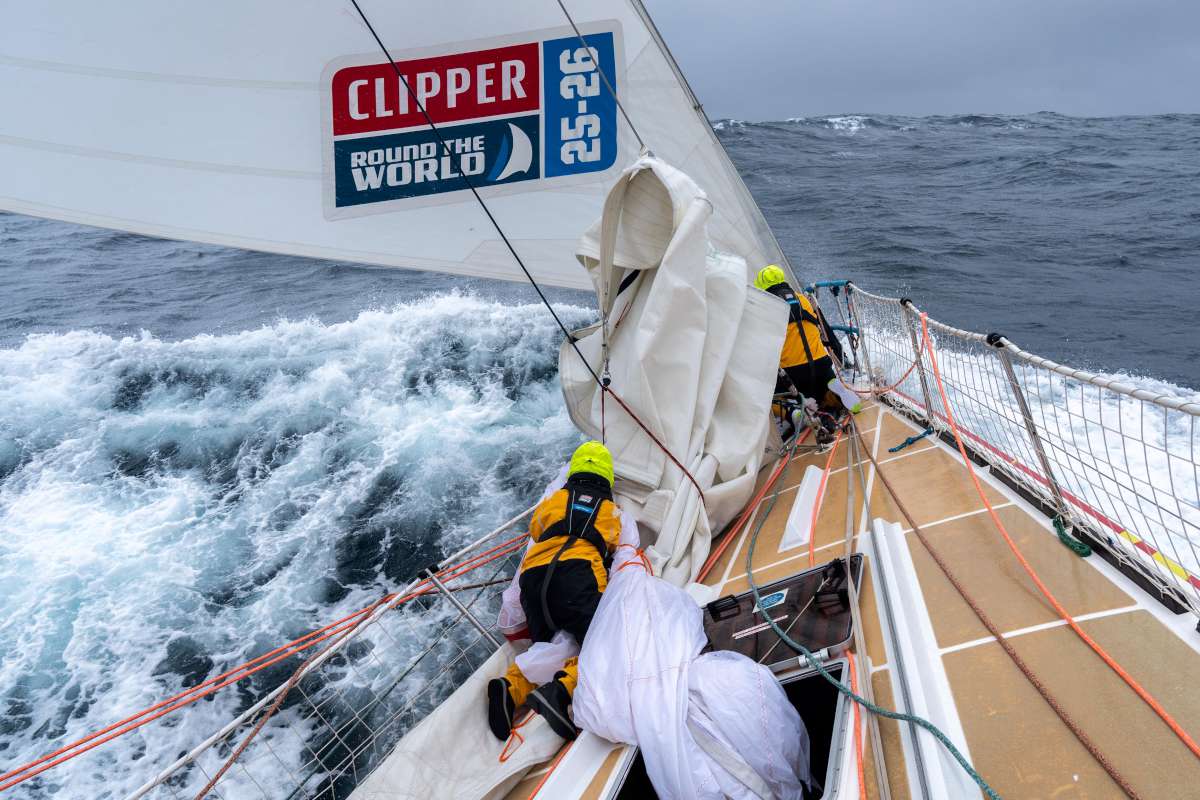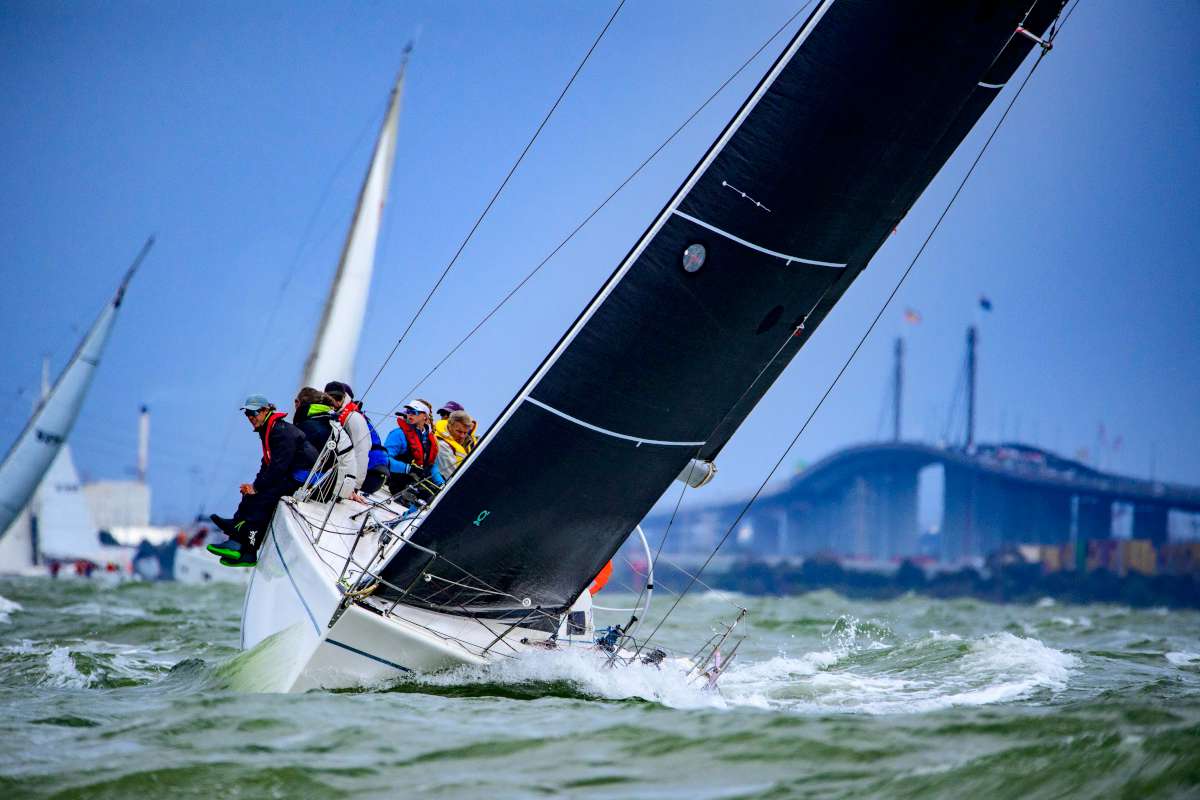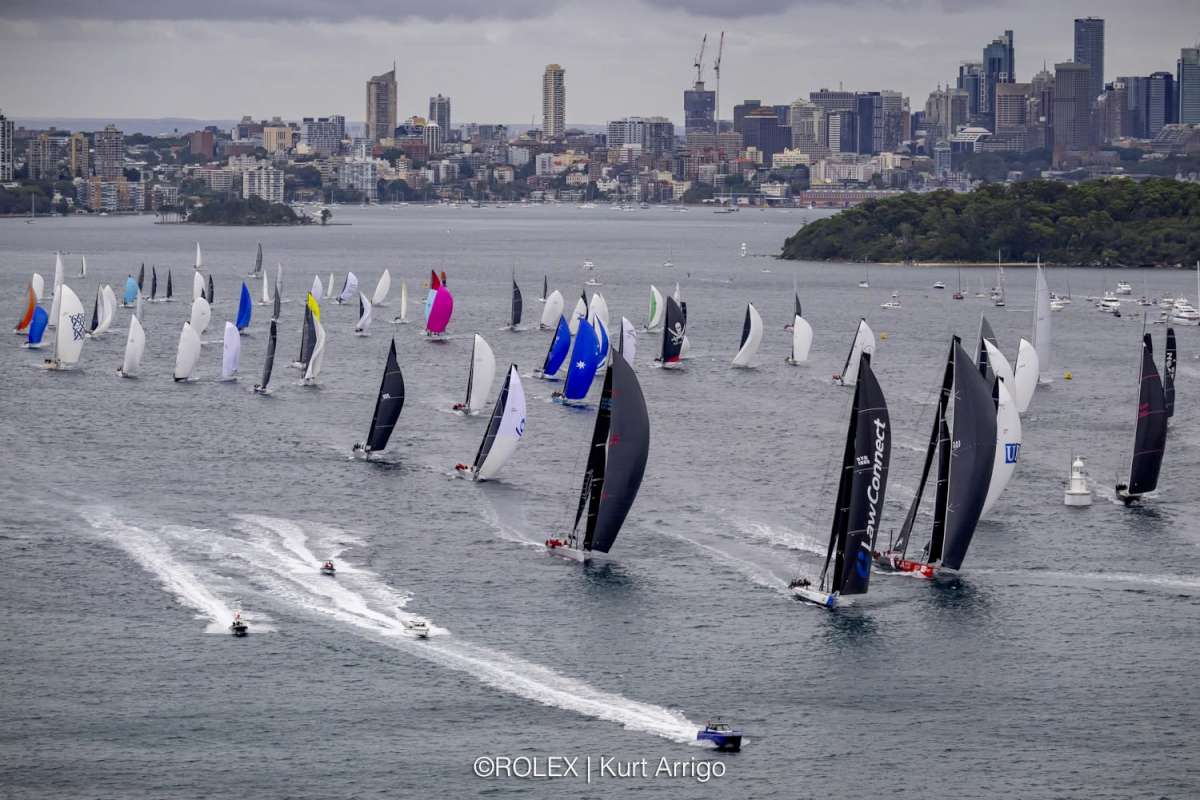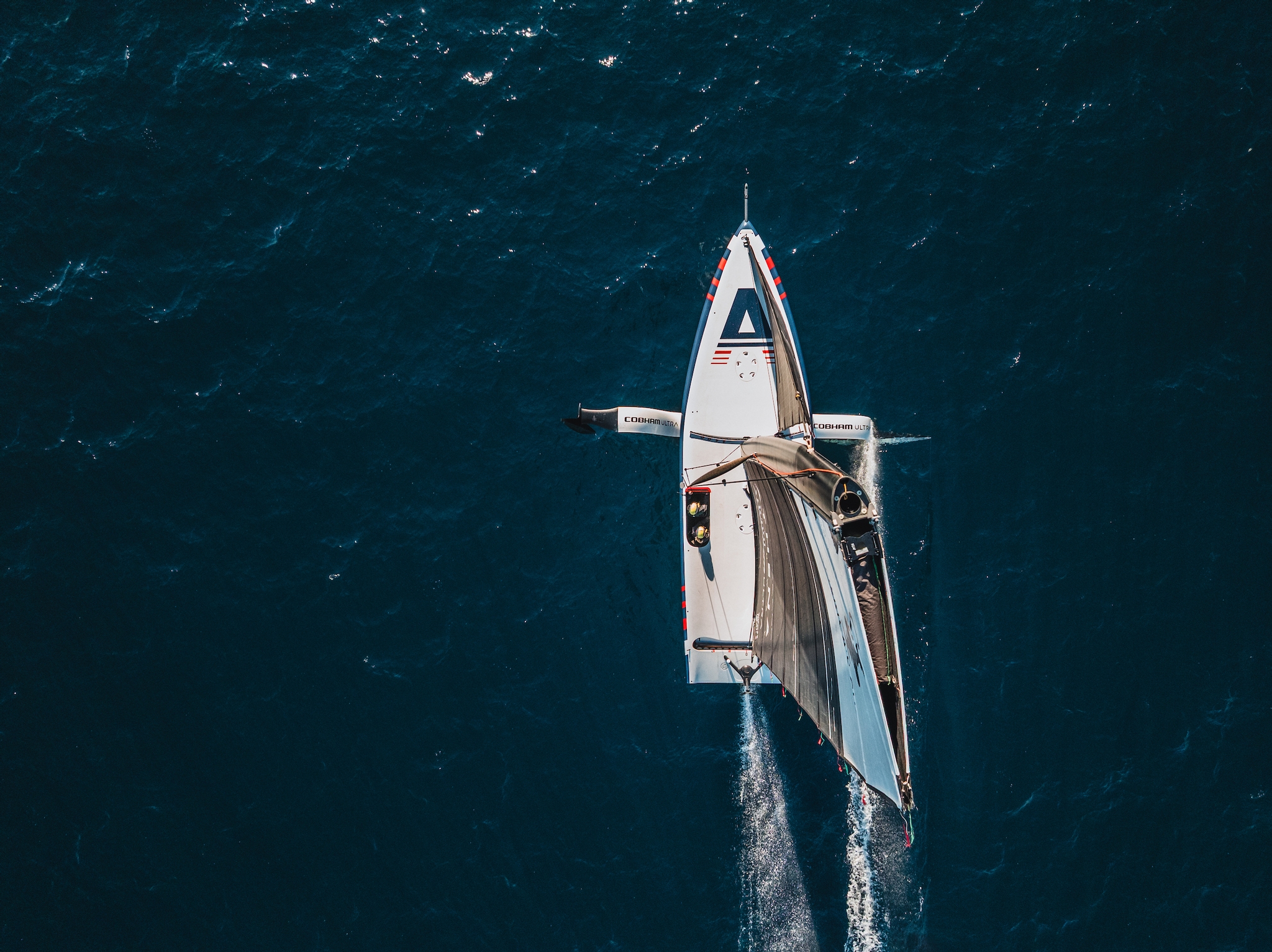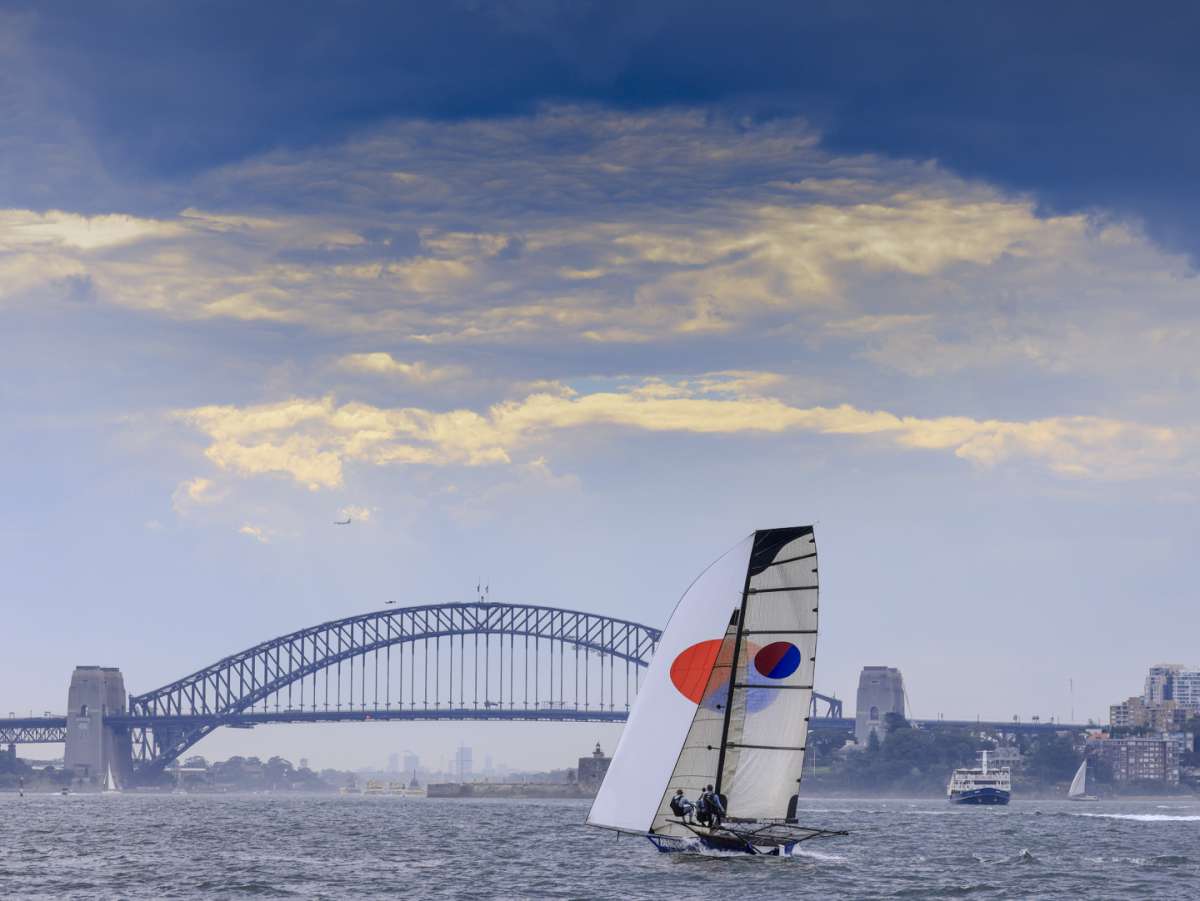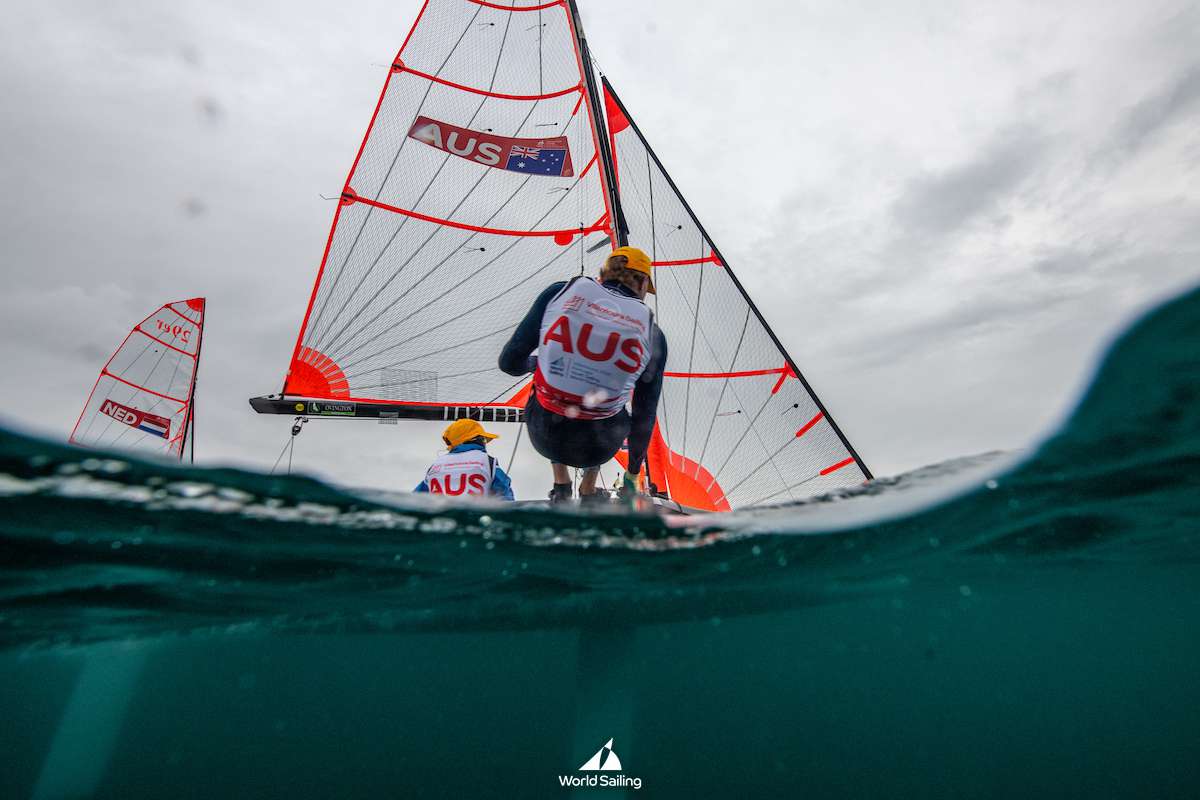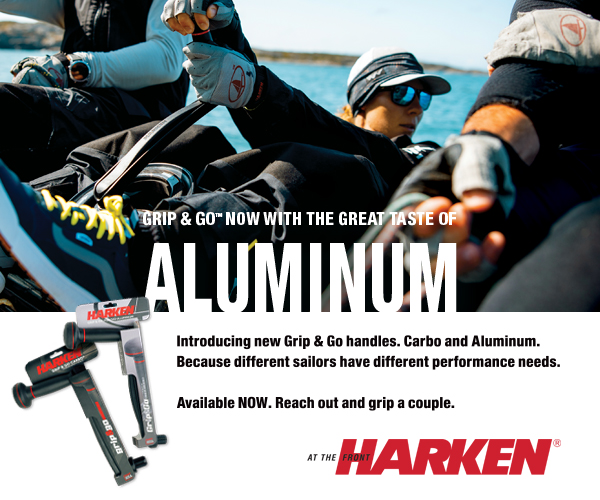Yes you read it right. It is possible to sail the Greek Isles and actually get paid for the pleasure. We did just that recently and did not even need any form of commercial qualifications. How can this be?
It all happened in a bit of a blur as we responded to a Facebook post a friend sent us in April about a company that was looking for a couple to lead one of its charter flotilla groups for the summer. On a whim and having nothing better to do, we sent off some details about ourselves and our sailing experience. Before we knew it we were booking tickets to fly to Europe just a few weeks later.
Med flotilla sailing
Working for a family-owned company based on the island of Poros, just south of Athens, our job was to lead a charter flotilla of nominally up to ten yachts around cruising grounds in the Saronic and Argolic Gulfs; generally making sure the clients have a safe and very enjoyable sailing holiday. Basically, we were to be tour guides afloat.
Flotilla holidays are very popular with European holiday makers for a variety of reasons. People new to chartering like the security of having an experienced lead crew available for guidance, while even seasoned sailors appreciate how having someone else to arrange berthing, deal with the onerous Greek bureaucracy found in every port, arrange water and fuel, look after any boat maintenance issues and even make dinner bookings for them. It provides a much more stress free and relaxed holiday.
Many also commented to us that they chose the flotilla option for the social side of things and enjoyed making new friends through the group dinners and other activities. This is especially so amongst families. The younger kids invariably make new holiday play friends while the teens flock together in port keen for some time away from the ‘parentals’ after sailing all day.
Our boat for the summer was SV Enigma, a Jeanneau 37; although it was a few years older than the rest of the modern charter fleet she proved quite sea-kindly and very comfortable to live on. The one real surprise to us was that she did not have an autohelm, so it was hand-steering all the way, almost 1,500 nautical miles by the time our summer was over.
The flotilla lead boat does not carry any paying passengers and there is no requirement for any form of commercial endorsement so our International Certificates of Competence issued by the RYA was all that we required in the way of qualifications to work as ‘flotilla leaders’.
Overall the weather was great, however, at times it was maybe even a little too warm. The daily maximum never dipped below 32 degrees Celsius, was often in the high 30s and reached up to 45°C during one week long heatwave. Fortunately the temperature did cool off enough most evenings to provide a comfortable night’s sleep. Greek summers are normally dry and we only experienced a couple of wet days during our whole stay.
We lead our charter group all over the Saronic and Argolic Gulfs to picturesque anchorages, islands surrounded by crystal clear waters, beautiful tiny harbours in traditional fishing villages, ancient sites and even into the larger port of Navplion with its amazing Venetian fortress and perfectly preserved old city.
Sounds idyllic, so what was the reality like? Let us look a little closer at what our summer job entailed.
Summer love
We arrived in our base on the island of Poros at lunchtime on a Thursday after a long 30 hours of tiring travel from Brisbane, so the first order of business was rest.
After a fairly basic orientation on Friday, we were greeting and briefing our first clients from 11am Saturday morning ahead of a Sunday morning departure for our first seven day charter.
Fortunately we had been sent a fairly comprehensive operations manual by the company in advance of our departure from Australia. It outlined what the role involved, which includes: handling all dealings with port police and harbour officials for all the boats in the fleet; keeping all boats water tanks filled; conducting engine checks on the boats and any simple repairs or maintenance that may be needed away from base, plus much more. It also provided good guidance about leading a flotilla regarding briefings, group dinners and a whole range of other activities.
Most importantly to us, it was packed with detailed information about the cruising grounds and the harbours we would be visiting. This proved a godsend seeing we had never sailed this area before.
The other boon was that, Marcus, the company’s Swedish RYA sailing instructor who had authored the manual, accompanied us on the first week-long charter north of Poros into the Saronic Gulf with seven client boats in our fleet. His job was both to show us the ropes and also see if we were up to the job. He was pleasantly surprised when we reached the first port and, rather than hand over the helm to Rob, Karen simply put the boat straight onto the dock in a very tidy manner. Once satisfied both of us could handle a boat, he spent much of the remainder of the week partying with clients in port and snoozing below while we were underway through the day.
He was a lot of fun and we came to value his friendship highly. His advice on flotilla issues throughout the season was invaluable.
To charter a yacht the company requires at least one person aboard have at least an RYA Day Skipper qualification or equivalent. So, in theory, there was someone on each boat that knew what they were doing.
What we quickly found, from our very first crew briefings, was that our clients ranged from experienced sailors who had logged many miles chartering or on their own boats, through to absolute beginners who had completed their RYA course and were about to take a yacht out on their own for the first time.
One couple’s entire boating history comprised of doing an RYA course three years previous and no sailing since. Not surprisingly they was a little nervous casting off on day one. They did make some rookie mistakes early in the week but nobody got hurt and no damage was done. After providing some coaching and encouragement we were really pleased with the progress in the space of just a week and. after that early grief, they enjoyed themselves so much they were planning to book again for next summer.
A feature of flotilla chartering is that virtually every overnight stop is in a port or harbour where all the boats are moored on a dock or town wall. Guests can step off and enjoy the location, including dining at one of the local restaurants known locally as tavernas.
In most ports the company knew of an establishment with good food and service where we organised group meals with everybody invited to dine with the flotilla leaders. It was very important to spread ourselves around and spend time with all the clients, which did prove interesting some weeks when our flotilla had more than sixty people aboard up to thirteen boats. In some small villages no single tavern would be capable of handling a booking that large so the clients were advised to explore for themselves and discover somewhere for an intimate dinner.
Our first week saw us settle into our new role and meet a number of the local taverna owners that the company has established relationships with over the years. We had an awesome group dinner on the beach at the small port of Nea Epidavros where our host, Nikos, instructed a number of our crews in traditional Greek dancing.
We also discovered how our friendly taverna owners were also our ‘go to’ people for all sorts of assistance. When one of our clients needed some urgent medical attention, Nikos organised a doctor’s appointment and taxi to get there, then accompanied our injured sailor to the surgery to act as interpreter. He also organised taxis at a very reasonable price for us all to visit the nearby ancient Epidavros Theatre. This type of assistance is pure gold when you do not have the local knowledge or the language skills.
After completing our week under Marcus’ guidance, without crashing any boats or misplacing any clients, we were set loose on our own. It was then full-on 24/7 for three months as we sailed almost 1,500 nautical miles leading a mix of seven and fourteen day flotilla groups.
The typical pattern of our work day would involve being up before 7.00am checking weather forecasts on a couple of different sites utilising different models, planning the day’s destination and basic route, making note of any navigation hazards along the way and any anchoring spots suitable for lunch and swim stops for the clients. If we were sailing to a port we had not visited before we would be studying the information about it in our operations manual and Googling all the additional background we could find so we could provide a comprehensive morning briefing to the flotilla members.
Briefings were generally set for 9.00am and held at a nearby taverna where everyone could have breakfast if they desired while we informed them of the plans for the day’s sail and evening stop. The distance travelled each day varied from short hops of just a few nautical miles to normally around twenty to twenty five and, occasionally, a little over thirty miles. After the group briefing we would touch base with each individual skipper to make sure they were fine with everything and answer additional questions; or often repeat the information delivered in the briefing when they did not pay attention as they scoffed their bacon omelette or whatever.
We then assisted each boat leaving the dock, helping with lines and providing guidance where needed. Each boat made their own way independently to the next destination. Keen sailors logged many more miles than the rhumb line as they filled their day tacking or gybing all over the gulf.
We could not get underway ourselves until all boats had left; we often found ourselves sitting around waiting for crews to return to their yacht from shopping, a late breakfast, a quick swim before heading off etc. We felt like mother duck setting her ducklings off to explore the pond.
Once we did cast off, we had to overtake the whole fleet to be waiting on the dock when the boats reached the next port. We soon learnt that this need to arrive first sees most flotilla lead boats motor everywhere leaving the sails furled, but that is not our style. We were here to sail the Greek Isles so we had canvas up every chance we got.
Once in port we needed to work out where we were going to moor everybody. There was often fierce competition for space on the dock, particularly during peak season in August. A number of flotilla groups operating in the area, plus many bareboat charterers, private cruisers and an ever increasing number of space thirsty catamarans, were all chasing the limited spots to tie up.
We always gave our skippers a ‘time to arrive in port by’ at the latest depending on the destination. In some small ports during high season we were asking them to be in as early as two or three pm so we could be reasonably sure of getting a berth. Even then we had many stressful times singing “another one bites the dust” as we watched spot after spot filled by other boats while we waited for our ducklings to arrive at the nest for the night.
We would be constantly counting up the possible places remaining where we might be able to squeeze a boat. All too often we’d be left sweating with one boat still to arrive and only one available berth remaining. Fortunately, we normally succeeded in getting everyone tied up.
Only once did we have no choice but to anchor two boats in the bay that had arrived too late. We had already rafted four boats wide from the dock and there was simply nowhere at all left to fit them. We were very lucky on that occasion that the bay provided a secure anchorage. In most locations anchoring off is not an option due to the depths.
As the boats arrived we would guide them in and make sure they were securely berthed. The huge range of boat handling experience amongst our skippers and crews, combined with the fact that we needed to ‘Med-moor’ in most ports, dropping the anchor on the harbour floor and backing into an often narrow space between other boats, made this a much bigger job than you might realise.
Watching other people anchor or moor their boats has always been one of the great spectator sports of cruising and, with newbie charterers at the helm, it can be even more so. We had one experienced crew who liked to arrive in port first so they could sit back with a cold G&T watching the fun and games as the rest of the fleet tied up. We even met a British expat couple whose regular Sunday afternoon entertainment was a leisurely liquid lunch in the dockside taverna at Ermioni critiquing the first day berthing performances of each week’s new group of charterers.
In theory the Med mooring process sounds simple. Identify the spot you intend to berth, manoeuvre your boat into a position ninety degrees to that spot on the dock and a good distance off, begin reversing towards your space, drop your anchor far enough out to ensure plenty of chain is laid along the sea bed, stop your boat with the stern just off the dock, secure your stern lines then winch some chain back in to set the anchor and secure.
As our boats reached port, we would stand on the dock at the spot we wanted a skipper to berth and, using a well-practiced set of hand signals, send them out perpendicular before getting them to begin reversing, hopefully towards us. We knew how much anchor chain each boat had and, using a very handy laser range-finder we had bought in Australia just before leaving, we could accurately measure the approaching boat’s distance from the dock and signal exactly when to drop anchor to lay as much chain as possible on the harbour floor.
When it all worked they would back straight in until we signaled to stop dropping chain as their stern approached the dock. The crews then threw us port and stern lines which we would run around bollards or through whatever fixtures were available before returning the lines on board to be secured on the sheet winches. On our call the windlass attendant would bring in chain until it was nicely taught and we were sure the anchor was set. The last step in the process was winching in or easing each stern line to square up the stern and make sure the gap between boat and dock was suitable for the gang plank. Job done. What can go wrong?
Plenty actually and it often did, particularly on the first day or two of each new flotilla. We always tried to get an idea of each skipper’s experience level during the boat briefing as they first arrived but even then we could never be sure of their abilities until we saw them handle a boat.
When asked, an American client listed a number of New York to Bermuda races amongst his sailing background, so you can imagine we were a little surprised when his first mooring was more than just a little shaky; that was until he stepped ashore and stated quite proudly, “well that wasn’t too bad for my first ever attempt at docking a boat.” When we asked if he meant first Med-moor he explained he had never driven a boat onto a dock in his life. All his sailing had been as crew and he had only spent time on the helm in open water.
Even one British charterer, with Yachtmaster qualifications, needed a couple of attempts on his first Med-moor.
With any sort of cross breeze blowing, boats meandered all over the water going anywhere but straight. Some arrived at the dock with the stern lines still neatly coiled away in a locker or threw them to us to discover the other end was not secured to a cleat. We tied many up only to find we had to send them back out and repeat the process as the windlass attendant had delayed or stopped dropping the anchor, which instead of being dug in well forward of the boat was now sitting virtually under the bow with no worthwhile length of chain out. In their eagerness, others could not quite wait for the down signal and emptied the locker of chain long before ever getting near the dock including one outstanding effort of pulling up over 100 metres short of reaching the wharf.
One crewmember, keen to succeed, watched us like an eagle waiting for our signal and managed to hit the down button exactly on cue. She then never took her eyes off us until receiving the stop anchor signal. Her great work may have been more successful if the anchor’s safety line had been untied and it had actually dropped off the anchor roller into the harbour instead of staying firmly attached to the bow. She had managed to run sixty metres of chain up, around the windless and straight back down into the other side of the anchor locker. Yes. She was just a little bit embarrassed.
The bottom line, with all the little berthing oopsies we watched clients make, was that no one was hurt and no boats were damaged. So what the hell, everyone still had fun.
While the hours spent getting all our ducklings safely secured in the nest for the night were always the hardest part of each day, we were very pleased with the quick progress the charterers made and by mid-week most were doing well. Like many things, Med mooring is simply a matter of practice.
A new skill we learned was rafting multiple boats using their anchors and running lines ashore. In suitable weather we spent a night at anchor this way to hold a beach party for the charterers which always proved a real hit. A cocktail competition proved a highlight of one such occasion. Each boat concocted their own creation in a one and half litre bottle to share among the crews.
Of course the onerous duty of judging the best entry fell upon us, as the lead crew. Karen and I soon discovered each entry consisted of almost pure spirits of every variety under the sun with very, very little mixer if any. Despite restricting our tastings to a quarter of a cup of each brew, by the time we declared a winner we certainly needed to sit down in a quiet spot for a while before we fell over.
Britain was the country of origin of the greatest number of our charterers but, during our Greek summer, we also enjoyed leading many sailors from all over Europe, Australia, New Zealand, Canada and the USA and formed many, many lasting friendships. While the seven-day-a-week/no-time-off nature of the job did prove tiring after three months, it was an incredible adventure that we are extremely glad we were fortunate enough to experience.
The most common question we were asked by clients at the end of each charter was, “will you guys be back next year? We’d love to sail with you again.” We always planned this to be a onetime only escapade but we were having such a good time we could not bring ourselves to say no. We could only reply “maybe. You just never know what might happen.”
Like to go Gre-Flo?
If you enjoy sailing to beautiful destinations, making new friends, socialising over awesome food while having someone else look after all the boring details and tiresome bureaucratic nonsense? Do it!
Even if you are an experienced bareboater, or own your own yacht, do not rule out a flotilla charter in Greece. Whether they were relative newbies or very experienced sailors, our clients had a seriously fantastic time. Almost all said they planned to do it again soon.
If you would like to view our video of our summer in Greece: https://www.youtube.com/watch?v=fzAbBM8g6NY
Like to lead?
We spent our summer skippering for a fantastic family company, Greek Sails in Poros. However, a quick Google search will reveal many more companies offering flotilla charters in Greece. All need lead crews each summer.
E-mail your interest and a rundown of your sailing experience to as many companies as you can find. Do it with plenty of lead time, particularly if you plan on applying for a visa to stay in Greece, more than the standard 90 days. This can only be done well in advance through the Greek Embassy or a Consulate.
Most flotilla charter operations in Greece run from late April until around the end of October.
You have to do this job for the fun and adventure, not money. A normal day involves starting around 6.30am to 7.00am and climbing into your bunk around 11.00pm or later. Remember, you are also on-call 24-7 and, on a number of occasions, we were up at all hours of the night resecuring/re-anchoring boats, reassuring crews or simply checking all was well.
By Australian standards the salary is rubbish so do not expect to get rich. The two of us, as lead skipper and first mate, earned two thousand Euro (approximately AU$3,000) a calendar month. Nominally, that is €1,200 for the skipper and €800 for the first mate.
We also learned that not all charter companies pay even that well.
Given the early starts, late finishes, seven days a week, we roughly calculated our hourly rate to be about two Australian dollars an hour each.
As most flotilla crews come from Europe, where discount airfares are both plentiful and cheap, the travel allowance provided to us was a very modest €200 each. The fact we came from the other side of the world was our choice. If you plan ahead you can take advantage of some heavily discounted fares to Europe but, rest assured, you will not get there
for 200 Euro.
Here is the good news. Your expenses are virtually zero.
You live on the lead boat and most tavernas will provide meals and beer or wine to lead crews free, in appreciation for bringing the flotilla clients to their establishment. You scratch my back, I’ll scratch yours. Obviously you do not go crazy and order the lobster but, between having breakfast at morning briefings and group meals most nights, that is sustenance taken care of.






